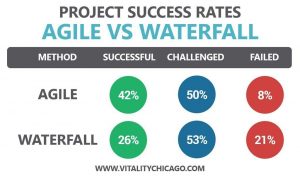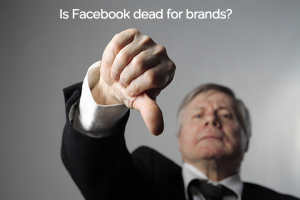
Willgard / Pixabay
One of the key lessons of 2020 is the need for companies, and individuals, to become more resilient.
Many organizations think they are resilient, but they are not. Research by McKinsey found that less than 10 percent of publicly traded companies pre-COVID were resilient. The lack of business resiliency is evident as you look across the host of big name retailers and restaurants that are closing for good—from 24 Hour Fitness to Pier 1 Imports and Brooks Brothers—and across the silent failures of small businesses that are dying by the thousands.
Likewise, many individuals overestimate their own resilience. Research by Everyday Health and Ohio State University found 83 percent of Americans think they have high levels of mental and emotional resilience, yet only 57 percent score as resilient.
The ability to bounce back from adversity (resilience) relies heavily on your ability to change course quickly and easily (agility). The good news is that you can learn and develop your agility skills which in turn will make you more resilient. Spotting the five key culprits that impede agility is the first step.
5 culprits that destroy agility and how to overcome them
|1| Success
The first behavior that sabotages agility is success. In fact, a touch of paranoia just might be what’s needed to help companies stay on top.
Andy Grove, founder and former CEO of Intel, described the conundrum best:
“Success breeds complacency. Complacency breeds failure. Only the paranoid survive.”
Grove believed business success contained the seeds of its own destruction. He believed that at least some fear is healthy—especially in organizations that have had a history of success. Fear can be a healthy antidote to the complacency that success often breeds. A touch of paranoia—a suspicion that the world is changing against you—is what Grove prescribed.
You need look no further than the S&P 500 to understand what Grove was advocating. Back in 1958, the average lifespan of companies listed on the S&P 500 was 61 years. Today, it’s down to 18 years. And, according to research firm McKinsey, by 2027, 75 percent of the companies currently on the S&P 500 will have disappeared.
Lesson: Don’t let success be your downfall.
|2| Status quo
The second culprit that destroys agility is inertia, complacency and the status quo.
A study by the Harvard Business Review found that organizations put tremendous pressure on employees to conform instead of challenging the status quo. In a survey of more than 2,000 U.S. employees across a wide range of industries, nearly half of employees regularly feel pressure to conform in their organization, and more than half say that people in their organization do not question the status quo. That’s a problem.
Although not all conformity is bad, we need to strike the right balance between stability and agility.
We’ve seen many famous brands lose their way because they were resistant to change. Remember EF Hutton, TWA, and General Foods? How about Borders, Circuit City, and Blockbuster? These brands were once household names, but not anymore.
Reflecting on my own experience, I saw the effects of success and maintaining the status quo first hand.
I began my marketing career at the Eastman Kodak Company. Kodak, at that time, was a big-league player and a household name. They ranked among the top twenty of the Fortune 500. At their peak, they commanded 90 percent of all film sales and 85 percent of all camera sales in the U.S. They also ranked as the fourth most valuable brand in the world.
Today, Kodak is a fraction of its former self and has spent much of the last decade attempting to maneuver out of bankruptcy and into new business areas. Once one of the most powerful companies in the world, today the company has a market cap of about $ 545 million.
So what happened? A century of success led to complacency, lack of organizational agility, and antibodies against anything that might compete with film.
Admittedly, conformity and maintaining the status quo are powerful forces that act as enemies to meaningful change.
Lesson: The status quo is the archenemy of agility.
|3| Blinders
The third obstacle that sabotages agility is having tunnel vision, being closed minded or having blinders on. In essence, ignoring the warning signs of a sub-optimal organization.
Blinders might help race horses maintain their focus by limiting their peripheral vision and staying keenly focused on the road in front of them, but blinders can be disastrous to your business and professional success.
Marketers often ignore the warning signs that a business is headed for a massive pivot and inevitable transformation. I call these the 4Ms of organizational change: a change in model, a change in market, a change in management or a change in metrics.
Despite ample warning signs, most employees are still surprised when a reorganization is announced. And most find themselves unprepared, scrambling and in reactive mode.
The worse part? It doesn’t have to be this way. There are steps marketing leaders can take to prepare for the unexpected, yet inevitable, shifts that are coming that I cover in a previous article.
Lesson: Don’t let rose-colored glasses turn into blinders.
|4| Aversion to change
The fourth culprit that destroys agility is an aversion to change.
We’ve all heard why people are resistant to change: fear of failure, uncertainty, risk, loss of control or status, stepping outside one’s comfort zone and even inertia. Change requires effort—added time, skills, and learning—and that’s why people often chose to stay right where they are. They subscribe to the change only when you have to mantra.
But are we really hardwired to resist and even sabotage change? Tim Kastelle, associate professor and director of entrepreneurship & innovation at the University of Queensland Business School, dispels this notion.
“It turns out that people don’t hate change at all. In many cases we actively seek out change. We move to a new city or country, we get married, we have children, we take a new job. These aren’t just changes—these are massive changes. And we often seek them out. People don’t resist change. At least, they don’t when they expect the change to make their lives better.”
That’s really the key, isn’t it? If you are in control of the change and believe it will improve your live, you’re in. If not, you resist.
Whether you love change or hate it, you have no choice but to embrace it. Perfecting your response to change will determine your career success or failure.
Strive to become an active partner in your company’s transformation efforts, not a helpless bystander or victim. While change is difficult for most people, the alternatives usually aren’t very rosy.
Lesson: The best way to avert change is to initiate it.
|5| Cultural attributes
The final barrier that threatens agility is a company’s underlying culture.
Most companies want to be more agile, but 59 percent don’t have the required cultural attributes—ranging from a willingness to share knowledge to quick decision-making—that are fundamental to agility.
Research firm Gallup developed a questionnaire to help companies understand and improve agility across their organizations. The questionnaire started with two simple questions:
- “In my company, we have the right tools and processes to respond quickly to business needs.”
- “In my company, we have the right mindset to respond quickly to business needs.”
The research uncovered eight factors that are fundamental to organizational agility:
- Cooperation
- Speed of decision-making
- Trial tolerance
- Empowerment
- Technology adoption
- Simplicity
- Knowledge sharing
- Innovation focus
Without these eight basics in place, leaders may find agility hard to sustain and almost impossible to scale. Clearly, most companies want to be more agile but most haven’t put the right culture in place to support agile processes and foster an agile mindset.
Lesson: Agile organizations start with agile people. Get culture right.
Summary
Constant change is the new normal. It’s a matter of business—and career—survival. To be sure, you will be faced with evermore-frequent organizational change in the years ahead. Being on guard for these five traditional behaviors that destroy agility is an important first step. Once you’ve identified an agility-busting culprit, there are actions you can take to counter these behaviors.
To propel you on your journey I’ve developed some simple steps you can take, starting today, to boost your professional and organizational agility. I call these actions power moves and I’ve summarized the top nine in an agility guide which is available as a free download.
Business & Finance Articles on Business 2 Community
(48)
Report Post






